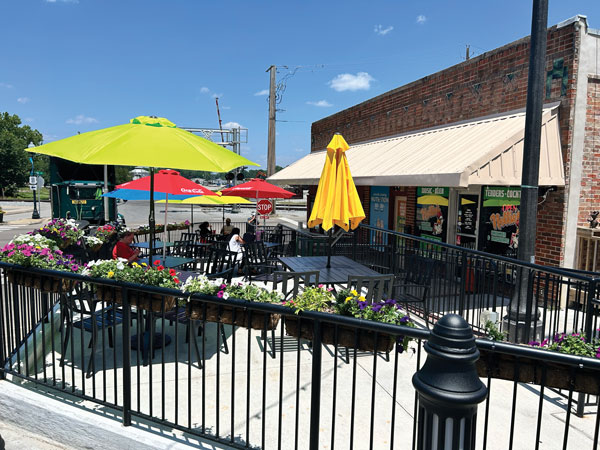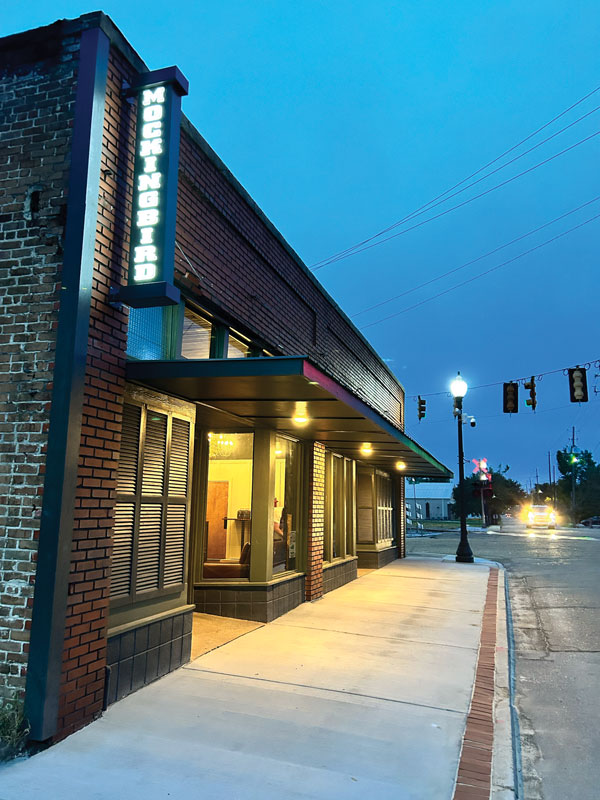In the signing of both Senate Bill 3056 and Senate Bill 2696 in May 2024, Mississippi Governor Tate Reeves made a significant step toward breathing new life into the state’s communities.
Capital city Jackson holds the state’s largest population concentration at more than 160,000 residents, leaving plenty of room for growth outside the region. The introduction of these two bills mirrors the targeted approach to economic development state and local leadership have been focused on for years. The consequences of such actions has led to an influx of millions toward ensuring residents and businesses have the resources in place to thrive.
The Mississippi Main Street Revitalization Grant (MMSRG) program was established through Senate Bill 2696, signifying a promise to dedicate state funding to downtown revitalization projects to Designated Mississippi Main Street Communities moving forward. Meanwhile Senate Bill 3056 provides nearly $7 million to MMSRG for 19 new projects, in addition to $500,000 statewide support and operations funding to non-profit organization Mississippi Main Street Association.
The concept of the Main Street Program is not new to the state, which attempted to receive grant funding from the U.S. Department of Housing and Urban Development to implement it in 1980.
At the time Mississippi was eager, but was not rewarded, nor did the state legislature have the funding in place to contract these services on their own. Through many trials and tribulations as a result of the community-based revitalization efforts, by the late 1990s the non-profit organization now known as the Mississippi Main Street Association (MMSA) was born.
Since then, MMSA has built a roster of 48 designated communities throughout the state with the aid of public and private investors and state partners, yielding the creation of 6,000 new businesses, 40,000 new jobs and the revitalization of more than 4,000 buildings.
A Revitalized Region
The city of Laurel, located in Jones County, has been a Designated Mississippi Main Street Community for 16 years. MMSA utilized its “Four Points” approach of economic vitality, design, promotion and organization to transform Laurel Main Street.
The framework of the town of nearly 20,000, built on the back of a thriving lumber industry, underwent a transformation that held true to the integrity of its history while spurring a new generation of economic activity.
In this time, the city has welcomed an array of fresh, homegrown businesses and restaurants to its downtown district. Spots such as Be Amazing Paper Company, Pearl’s Diner, The Loft, The Rusty Chandelier and Guild & Gentry are among the local businesses that received recognition in 2023 for the Best of Mississippi Awards. Bridging the town’s industrial history through preservation of buildings and homes, mixed with lively art murals and community-focused events, it’s no wonder the city has been named one of the Top 50 Small Towns in the South.
Now with state funding in hand, Laurel’s neighboring city of Hattiesburg is set to begin its downtown revitalization efforts. As one of the 19 new Designated Mississippi Main Street Communities, Hattiesburg has received the full MMSRG grant amount of $500,000 toward its initiative.
Much like Laurel, the city earned its spot as a vibrant southern community by being named a Top 25 Southern City on the Rise by Southern Living Magazine in April 2024. Currently, Hattiesburg pulls in $300 million each year from tourism, resulting in an abundance of healthy growth as of late. When applying to join the program the city proposed to revamp a vacant building located at 300 Hardy Street, positioned at the entrance of its downtown. The project aims to establish a 8,000-sq.-ft. Welcome Center that will house both VisitHATTIESBURG and the Downtown Hattiesburg Association.
 Once complete, the Hattiesburg Welcome Center will lead directly into the city’s downtown district.
Once complete, the Hattiesburg Welcome Center will lead directly into the city’s downtown district.
Photo courtesy of the Downtown Hattiesburg Main Street Association
“Over the past three years, Downtown Hattiesburg has seen significant growth with 22 buildings sold, 27 renovations and 18 new businesses opening,” says Downtown Hattiesburg Main Street Association Director Andrea Saffle. “The center aims to not only sustain but accelerate this positive trajectory, adding value to the ongoing urban renewal efforts and economic development strategies.”
The site’s key location allows for seamless community gatherings and an ideal way for visitors to start their journey. After an anticipated two years of renovation work the Welcome Center will house a new on-site museum and gift shop, in addition to public outdoor space, indoor meeting spaces and still more to come.
“The Hattiesburg Welcome Center is poised to become a significant economic driver, contributing to the vitality of the local economy in several ways,” says Saffle. “First and foremost, by serving as the headquarters for the Hattiesburg Tourism Commission and Downtown Hattiesburg’s Main Street program, the center establishes itself as the strategic nucleus for tourism and downtown development initiatives.”
Unlike ever before, these centralized agencies are afforded the ability to collaborate on new projects and marketing efforts that continue to build upon the city’s quality of life offerings.
The region’s local leadership, encompassing both Laurel and Hattiesburg, is intent on keeping this economic development activity in motion, in part by providing refreshed space for entrepreneurs and businesses to find new success, and the quality of life to keep residents at home while leaving visitors with an unforgettable Mississippi experience.
More to Come
Enhanced quality of life serves as a critical component of a company’s site selection decision, and corporate leadership has taken note of the Magnolia State. In the past year, this region of the state has brought in a number of new project and expansion announcements involving hundreds of direct jobs.
Just 15 minutes outside of Hattiesburg, Cold-Link Logistics and partner Whitestone Transportation’s nearly 200,000-sq.-ft. cold storage warehouse and transportation hub is set to open in June 2024, according to the latest update from Cold-Link. The $64 million investment aims to fill a missing need for Mississippi food producers. With a goal to service this industry for the long-term, Cold-Link secured its 65-acre site at the I-59 Supply Chain Park in Moselle. Once operations begin the site will create 84 new jobs.
In the months to follow, plywood manufacturer Hood Industries’ plans to welcome its newest facility in Beaumont. The company has called the region home for close to 45 years, though it lost its original facility due to natural disaster in 2022. After the tough blow, Hood Industries didn’t leave Mississippi, instead coming forward with a $200 million investment to rebuild.
“We are a part of this community,” said Hood Industries President Jay Galloway. “And they are a part of us.”
Hood Industries will open doors to the new facility in 2025, bringing on 265 jobs. The catastrophe allowed the company to introduce a modernized manufacturing plant, allowing for double the previous production capacity it once had.
Paired with the additional 300 jobs created by the arrival of Jones Capital’s national HQ in Hattiesburg and the Lucky Rabbit’s 24,000-sq.-ft. retail space expansion at the historic Hattiesburg Grocery building, this region is prepared to show the nation what small town strength means when it comes to cultivating new opportunities.

